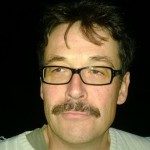Link to HAL – halshs-04663658
Link to DOI – 10.3390/urbansci8030098
Urban Science, 2024, 8 (3), pp.98. ⟨10.3390/urbansci8030098⟩
Dengue fever is an urban, tropical, and semi-tropical disease transmitted by Aedes aegypti and Aedes albopictus mosquitoes. One significant challenge lies in identifying reliable intra-urban indicators of their densities. Following standardized sampling protocols that adequately take into account the spatial heterogeneity of the geographical contexts which may influence mosquito habitats is therefore fundamental to compare studies and follow such relevant indicators. We develop a method for subdividing urban territory based on environmental factors which are susceptible to influence the density of potential mosquito-breeding containers. Indeed, the presence of these containers, most of which are produced by humans, is essential for the renewal of mosquito populations. Land-uses variables and their local variations are determinant in this analysis. Starting from each building and its immediate neighborhood described in terms of vegetation and open area, we computed the local landscape metrics of a million buildings in Bangkok. We then used segmentation and clustering techniques to generate homogeneous zones based on these components and physiognomy. Subsequently, a classification process was conducted to characterize these zones according to land-use and composition indicators. We applied this automatic clustering method within Bangkok’s urban area. This classification built from hypotheses on the existence of links between the types of urban landscape and the presence of outdoor containers must be evaluated and will serve as a foundation for the spatial sampling of field studies for vector surveillance in Bangkok. The choice of sampling zones, even if it must be based on an administrative division due to the decentralization of health agencies in Bangkok, can then be enriched by this new, more functional division. This method, due to the genericity of the factors used, could be tested in other cities prone to dengue vectors.

